On July 16, 2025, our President, Dennis O’Connell, and other key industry figures from Ethereum Enterprise Alliance, Linux Foundation Decentralized Trust, Etheralize, and Chainlink Labs, met in person with the SEC Crypto Task Force in Washington, D.C.
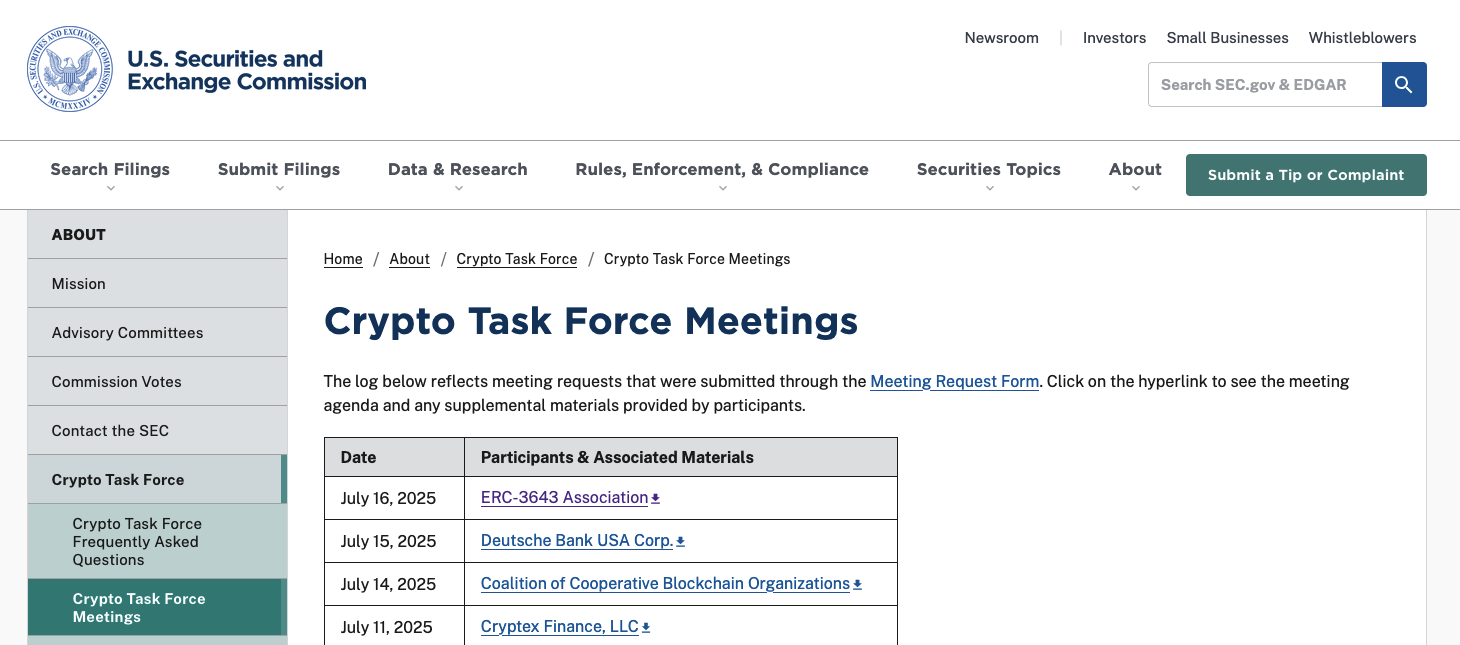
During the meeting, the discussion covered several key areas critical to advancing the tokenization industry through the ERC-3643 standard and its role in enabling secure and compliant tokenization of securities.
Ethereum, Chainlink, LF Decentralized Trust, and ERC3643 Association presented to the SEC Crypto Task Force in a historical Crypto Week for the US. This meeting laid the key groundwork for the SEC Task Force to understand the Ethereum ecosystem's need for standards, the ongoing work of Open Standards, and to ultimately provide rationale to embrace new technologies, including ERC-3643 and Chainlink ACE to accelerate the adoption of securities on blockchain. - Dennis O'Connell, President of ERC3643 Association.
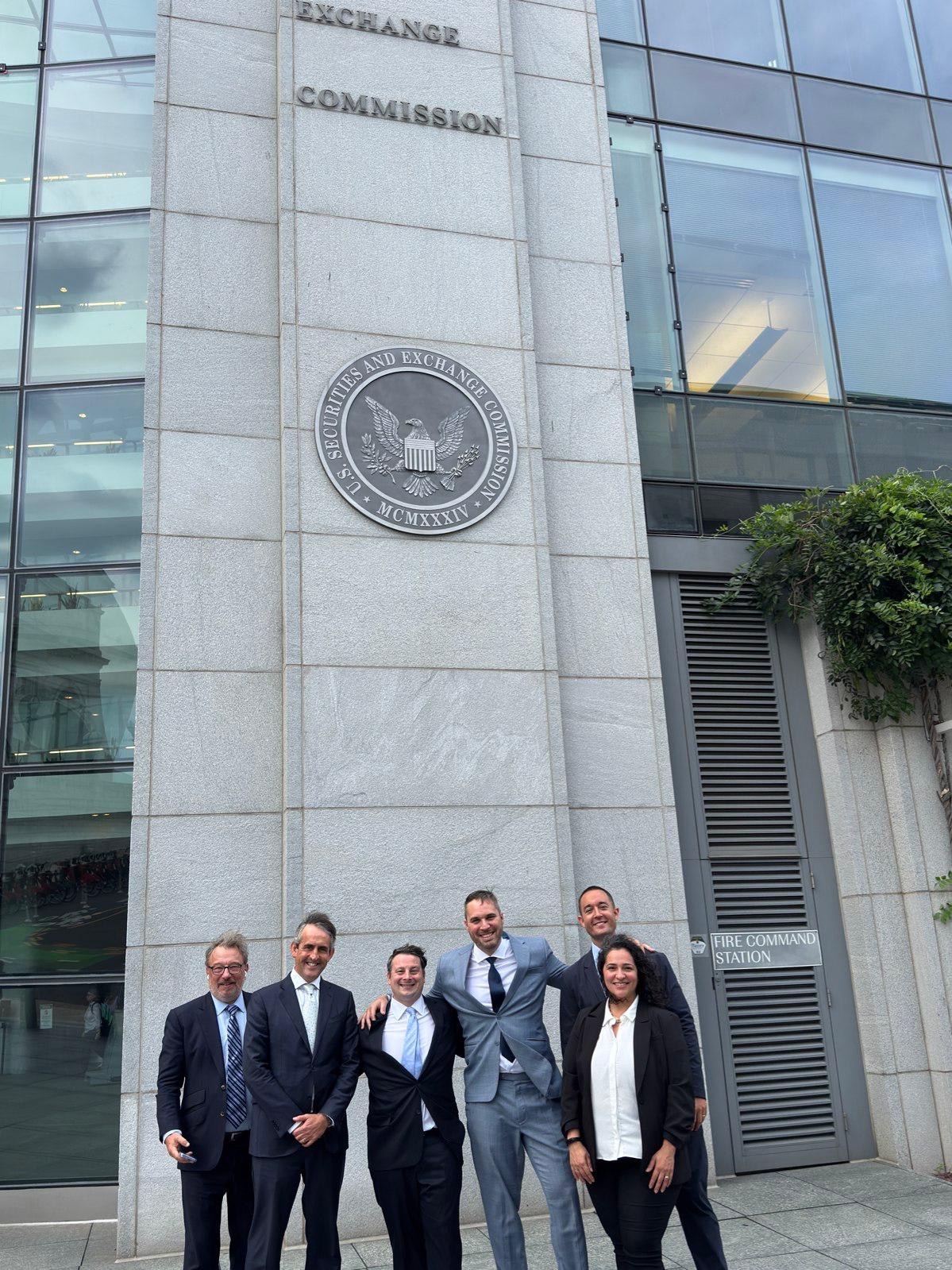
Formed to clarify regulatory expectations around digital assets, the SEC’s Crypto Task Force was established to help bridge traditional securities law and emerging blockchain technologies. They aim to:
Through meetings, roundtables, and public engagement, the Task Force is charting a path forward for digital assets, cryptocurrencies, protocols, and tokens, including those used for tokenized securities.
By engaging directly with the SEC Crypto Task Force, we’re able to demonstrate how ERC‑3643 functions in practice and the progress we’ve made to ensure existing securities laws can be enforced on-chain. This helps guide regulators toward a balanced approach, avoiding overregulation and aligning with the ‘same assets, same rules’ principle adopted by many jurisdictions.
Cryptocurrencies and stablecoins are permissionless, allowing anyone to access and hold them. However, this openness comes with significant risk: if a private key is lost, the associated tokens are lost as well. This is an unacceptable outcome in the context of regulated securities.
To address this concern, some solutions use wallet whitelisting to control access. However, this approach has limitations. A wallet is not an identity. Whoever controls the private key controls the assets, regardless of who the rightful owner is. This makes true onchain ownership verification impossible and undermines regulatory transparency.
Moreover, these setups usually rely on offchain registries maintained by the issuance platform to link wallets to real-world identities. This creates a single point of failure: if the platform goes offline, ownership records can be lost or become inaccessible. Additionally, because compliance validation is handled offchain, these tokens struggle to interoperate with DeFi protocols, limiting their usefulness and creating ecosystem silos.
As a result, regulators are growing increasingly cautious about such models and adding stricter regulations to protect investors. But these measures often increase cost and complexity, discouraging issuers from pursuing tokenization altogether.
At the meeting, Dennis presented how ERC-3643 enables the compliance check process entirely onchain through permissioned tokens and digital identity to tackle the compliance and interoperability.
To ensure the concept was accessible to all, we provided a simplified explanation of the technical framework in this blog.
Compliance Enforced at the Smart Contract Level
With ERC-3643, token transfers can only occur if both of the following are met:
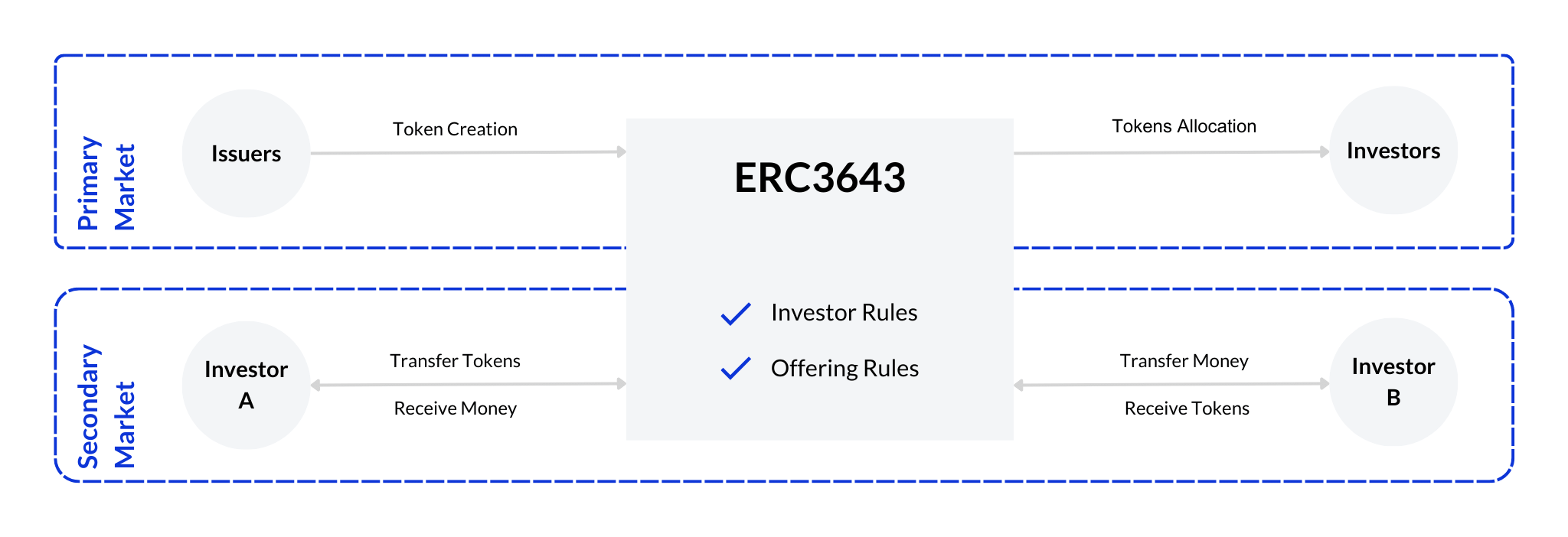
Whenever a transfer is initiated, the ERC-3643 smart contract checks if the counterparty’s ONCHAINID contains a valid KYC or KYB proof issued by a trusted claim issuer (e.g. compliance agent appointed by issuers). Only if the proof is verified and all compliance rules are met will the transaction succeed. This turns the blockchain into a real-time eligibility verification system, eliminating the need for offchain approvals.
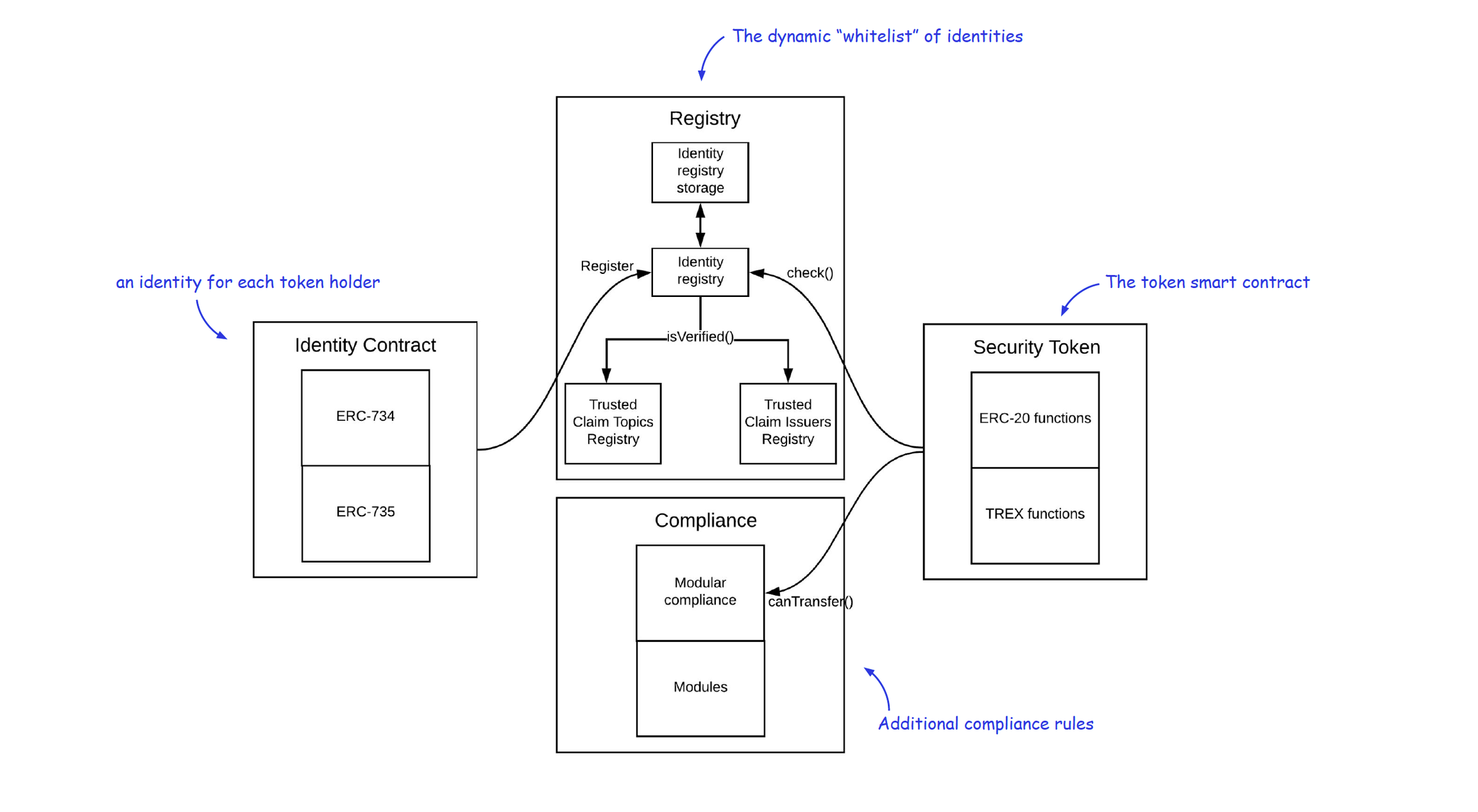
Unlike wallet whitelisting, ERC-3643 uses identity contracts (ONCHAINIDs) as the core of the ownership registry. These contracts can be linked to multiple wallets, allowing flexible access without compromising control.
If a wallet is lost, the tokens can be moved to another wallet linked to the same identity contract, without affecting the ownership registry. This ensures continuity and security. In contrast, wallet-based whitelists provide no auditability or recovery mechanism, often requiring offchain reconciliation and creating major compliance and operational risks.
With ERC-3643, even if the platform itself encounters issues, the compliance logic and registry remain fully functional onchain, independent, immutable, and auditable.
In practice, a compliance agent acts as a proof certificate issuer. The issuance platform allows this agent to securely collect identity data offchain and verify it. Once verified, the agent issues a KYC certificate (a cryptographic proof) to the investor’s ONCHAINID, without revealing any personal data onchain.
The ERC-3643 registry uses a simple isVerified() function to check if the required proofs exist in the identity contract before adding the user to the registry or authorizing a transaction. If the proof is revoked later (e.g., due to expiration or regulatory breach), the investor immediately becomes ineligible to transfer tokens.
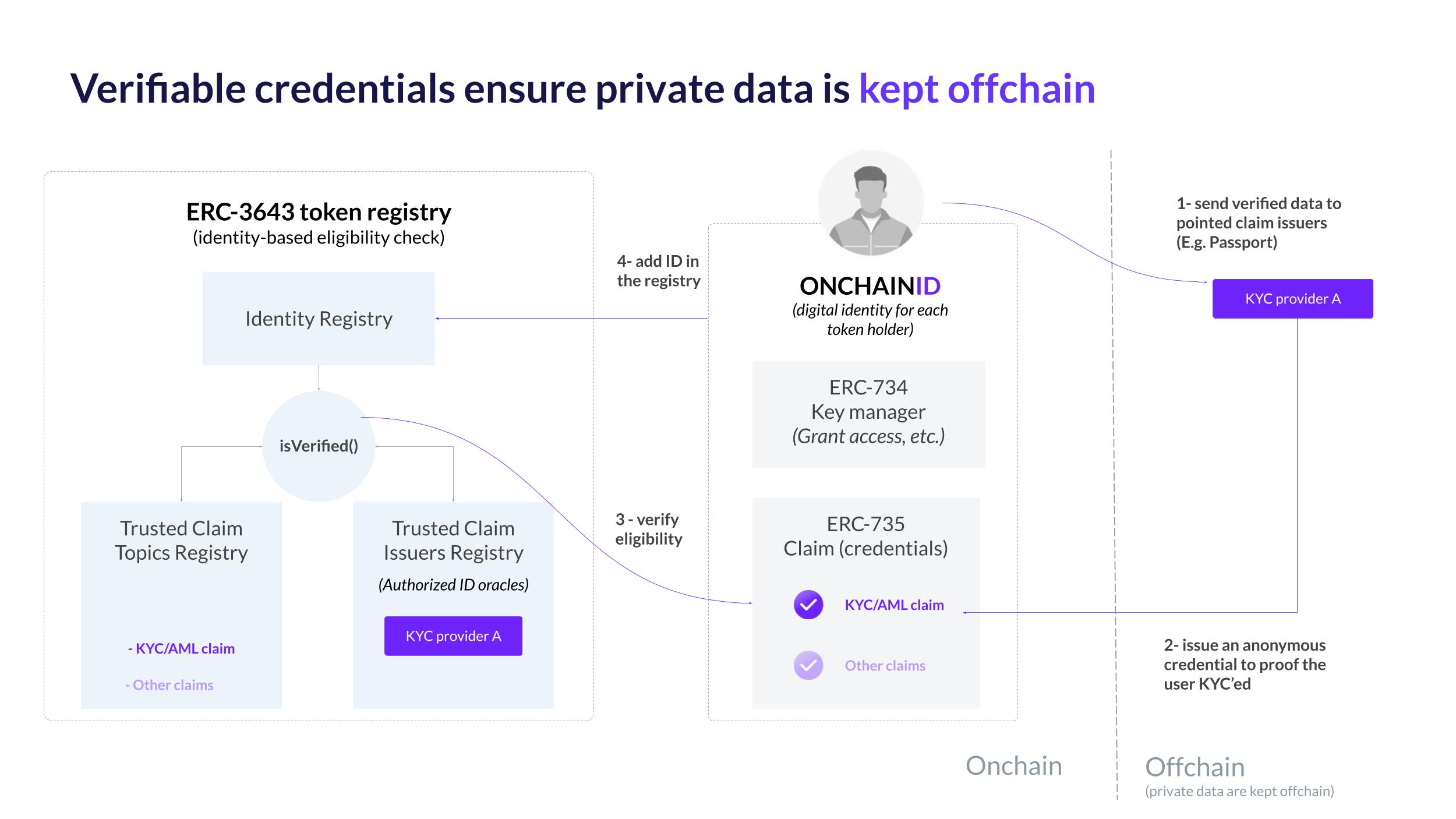
ERC-3643 is built on top of ERC-20, with a compliance layer added on. This means ERC-3643 tokens can seamlessly interact with any DeFi application that supports ERC-20, essentially the majority of existing DeFi protocols today. However, unlike standard ERC-20 tokens, onchain actions of ERC-3643 tokens only occur when all compliance conditions are met. This opens the door to a future of compliant DeFi for regulated, tokenized securities.
That said, user experience remains a key challenge. For instance, ERC-3643 tokens can technically be swapped on Uniswap, but if the compliance checks fail, the transaction won’t go through, and users are often left in the dark, with no explanation.
To fix this, DeFi applications need to simply add a notification component that informs users why a transaction failed and what to do next, for example, completing an onboarding process to become eligible.
This is the power of an open standard: the community can build on top of it. For instance, our members DevPro and Tokeny have developed open-source UI components that any DeFi platform can integrate to show denial reasons and guide users through next steps.
ERC-3643 is designed as a modular framework, think of it as a compliance Lego motherboard where different components can plug in and operate seamlessly. This architecture allows issuers, service providers, and developers to integrate new modules or standards without breaking compatibility.
At the meeting, we introduced Chainlink’s Automated Compliance Engine (ACE) as a prime example. Built to solve onchain compliance challenges, ACE can be directly connected to ERC-3643 smart contracts. This allows issuers to easily deploy and reuse complex compliance templates for similar issuance.
This plug-and-play design unlocks interoperability at scale, ensuring all applications built on or around ERC-3643 can work together, making it easier to grow the ecosystem without fragmentation.
This meeting was an opportunity to showcase what we’ve built with ERC-3643 in the Ethereum community, highlight key milestones, and share deep technical insights with the crypto task group. Our goal was to help regulators and industry leaders clearly understand the infrastructure that already exists—so they can provide the right guidance for the future of tokenized finance.
“Crypto Week” in the U.S. has been incredible, as Congress advanced three landmark bills: the GENIUS Act, the CLARITY Act, and the Anti-CBDC Surveillance State Act. This strong legislative push signals a decisive shift toward regulatory clarity and innovation in digital assets. We’re honored to be deeply involved in this movement to influence, contribute, and create value within the U.S. market.
We’re confident this momentum will empower the U.S. to lead the transition of regulated securities onchain, driving faster growth, broader innovation, and stronger trust across the digital financial ecosystem.
The ERC3643 Association is a non-profit organization regrouping industry leaders within a shared mission to advance the adoption of the ERC-3643 standard and promote the development of a standardized, secure, and compliant tokenization framework. The association brings together the expertise and resources of its members to foster collaboration, drive innovation, and create a more inclusive, efficient, and secure financial landscape. By supporting the widespread adoption of the ERC-3643 standard, the association aims to unlock the full potential of tokenization and pave the way for a new era of global asset management.